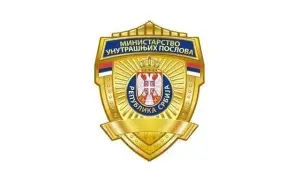- Serbia
Get to know Serbia
- Citizens
Culture and science
Health services
Pension and disability insurance
- Business
Employment
Economy
- Media
- Government
- Contact
Keep in touch
Contact form
Back
Keepin touch
Whether you have a question, comment, suggestion or any problem in the purview of the government, send us your message and we will try to respond as soon as possible. If your problem is not in our purview, we will forward your message to the relevant institution.
Q:
A:
Euro-3 standard as condition for import of motor vehicles
Belgrade,
2 December 2005
Serbian Ministry of International Economic Relations stated that the Serbian government, in accordance with the new law on foreign trade, which was submitted by the ministry, has passed a Decree on import of motor vehicles, envisaging the necessary conditions for import of passenger vehicles (category M) and cargo vehicles (category N).
In line with EU standards, the only remaining criterion is the ecological one. That means that all imported vehicles must have engines built according to at least Euro-3 standard, which prescribes the maximum levels of allowed exhaust gas emission and noise, reads the statement of the ministry.
Any private or legal person can import a new or used vehicle, under the condition that a customs office confirms that the vehicle is originally manufactured according to the Euro-3 standard. That means that the customs office needs to examine the vehicle itself (chassis and engine numbers) and the accompanying documents (a vehicle registration document and a contract of purchase), and to compare the data with those stated in the lists of makes and types of vehicles, where it can also be checked whether the vehicle is manufactured according to at least Euro-3 standard, it is said in the statement.
Therefore, a potential importer of a vehicle must check beforehand whether the vehicle was made in line with the Euro-3 standard at the least, warns the ministry. As a rule, all vehicles made from 2001 onwards are produced according to this standard, while some vehicle manufacturers started the application of this standard even earlier.
If a custom officer cannot determine whether a vehicle is within the Euro-3 standard or not, which is the case with vehicles manufactured according to the American, Japanese or standards of a third market, the verification will be performed by an official homologation institute. In this case, that is the Institute for Standardisation or persons authorised by the institute. Therefore, this procedure enables import of vehicles manufactured for markets other that European, which requires additional checking, it is said in the statement of the ministry.
The import of donated vehicles and classic cars manufactured before December 31, 1970 is unrestricted, concludes the statement of the ministry.
Any private or legal person can import a new or used vehicle, under the condition that a customs office confirms that the vehicle is originally manufactured according to the Euro-3 standard. That means that the customs office needs to examine the vehicle itself (chassis and engine numbers) and the accompanying documents (a vehicle registration document and a contract of purchase), and to compare the data with those stated in the lists of makes and types of vehicles, where it can also be checked whether the vehicle is manufactured according to at least Euro-3 standard, it is said in the statement.
Therefore, a potential importer of a vehicle must check beforehand whether the vehicle was made in line with the Euro-3 standard at the least, warns the ministry. As a rule, all vehicles made from 2001 onwards are produced according to this standard, while some vehicle manufacturers started the application of this standard even earlier.
If a custom officer cannot determine whether a vehicle is within the Euro-3 standard or not, which is the case with vehicles manufactured according to the American, Japanese or standards of a third market, the verification will be performed by an official homologation institute. In this case, that is the Institute for Standardisation or persons authorised by the institute. Therefore, this procedure enables import of vehicles manufactured for markets other that European, which requires additional checking, it is said in the statement of the ministry.
The import of donated vehicles and classic cars manufactured before December 31, 1970 is unrestricted, concludes the statement of the ministry.
-
 Belgrade, 7 November 2025
Belgrade, 7 November 2025Gratitude to Italy for continuous support for Serbia’s European path
-
 Belgrade/Doha, 4 November 2025
Belgrade/Doha, 4 November 2025Serbia among signatories of new declaration on social development in Doha
-
 Belgrade, 3 November 2025
Belgrade, 3 November 2025Assessments of Serbia’s reform efforts should be based on realistic indicators
-
 Belgrade, 28 October 2025
Belgrade, 28 October 2025Improving comprehensive cooperation between Serbia, Ireland
-
 Belgrade, 28 October 2025
Belgrade, 28 October 2025Rotation of Serbian Armed Forces medical team in mission in Central African Republic
-
 Belgrade, 22 October 2025
Belgrade, 22 October 2025Police working intensively to clarify incident outside parliament
-
 Belgrade, 8 October 2025
Belgrade, 8 October 2025Strong protest over continued arming of Priština, violation of UN Security Council Resolution 1244
-
 Topola, 7 October 2025
Topola, 7 October 2025Diplomatic corps visits Topola, Oplenac
-
 Belgrade, 6 October 2025
Belgrade, 6 October 2025Continuation of intensive cooperation with Russia in all areas of mutual interest
-
 Belgrade, 6 October 2025
Belgrade, 6 October 2025Boat carrying several Chinese citizens capsizes on Danube
